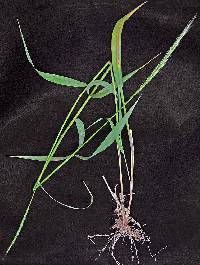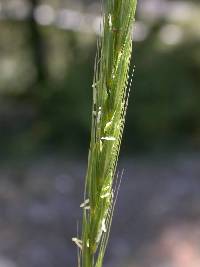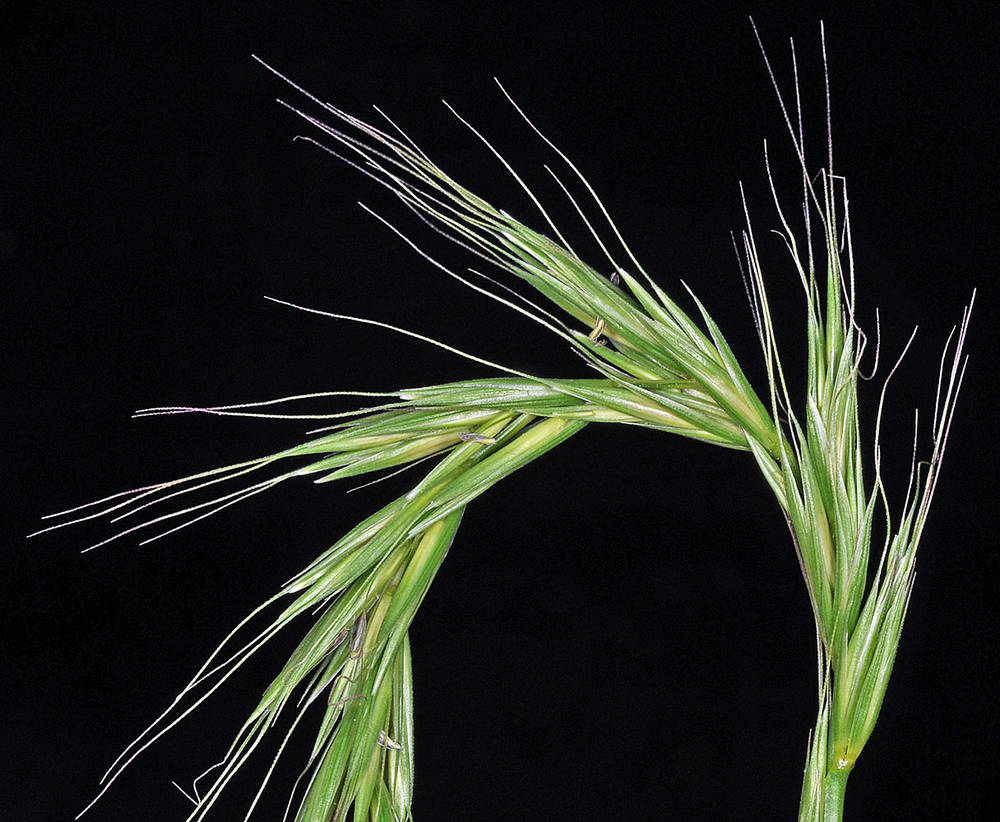Written By: Anne Ternes
- Scientific Name: Elymus glaucus ssp. glaucus
- Canopy Layer: Groundcover
- Attracts: Birds and Small Mammals
- Portland Plant List: Yes!

Blue wildrye is a tall, thin, slow spreading grass that grows in dry, sunny areas, moist, sunny areas, moist, shaded areas, dry, deep-shaded areas, just about anywhere that isn’t wetland. Unlike its name suggest, blue wildrye is not a ryegrass. It was given the common name “wildrye” for the bluish-gray hue of its leaves which is common among true ryegrasses. Blue wildrye is native to most of western North America and is very much at home in the Pacific Northwest. Even though it is underappreciated, as many grasses are, blue wildrye is a crucial soil stabilizer, habitat creator, and food source for local wildlife.

Blue wildrye’s native range extends across much of North America. However, it is densest in the western United States of Washington, Oregon, California, Nevada, Utah, Colorado, Arizona, and New Mexico. Branching out from these more concentrated populations in the west, small corridors of blue wildrye stretch east, making their way as far as New York state. This wide range of native habitat suggests blue wildrye is versatile with its requirements. This is especially true in the Portland-Vancouver metro area, as blue wild-rye is found in all but two of our habitat types: riparian and wetlands. Here, blue wildrye grows well in full sun, shade, and soils ranging from dry to moist. Consider planting blue wildrye on slopes to prevent soil erosion, add them to a mix of full sun or full shade loving plants to add texture, line paved or rocky areas to create a border, or plant it near shrubs to give birds easy access to blue wildrye’s seeds. Need some plant community suggestions? Blue wildrye is commonly found growing with Douglas fir, alders, maples, snowberry, strawberries, yarrow, and asters.

Grasses are simple beauties, creating flowing pockets of circular stems and flat blades that offer color and texture contrasts to the landscape. Blue wildrye especially offers excellent color contrasts, supplying a sea-green, nearly teal tint that counterpoints deep greens and bright flowers and is an appealing complement to cooler colored flowers. Individual stalks of blue wildrye are small in diameter, making them largely inconspicuous if they don’t form a large colony. This is especially true in the winter when most of the above-ground vegetation dies back and in the spring when new, slender shoots rise. Blue wildrye begins flowering in June and can persist through August when the last hangers-on begin developing seeds. As with all other aspects of this plant, the seed pods are small and easy to pass by, but take the time to stop, notice the deep striations of each spikelet, reach out to the quill-like taper of each pod, enjoy the small-scale beauty blue wildrye offers.

Blue wildrye is a ground cover plant, setting it in the lowest-lying vegetation layer. Plants that provide ground cover help reduce soil erosion by providing cover for soil from elements such as wind and rain. Blue wildrye additionally helps prevent soil erosion by anchoring soil with its rhizome root system, reducing the likelihood the soil will be washed away. As a tall grass, reaching up to four feet, blue wildrye provides cover for small mammals and birds that forage on the ground. Many birds will use the stems and blades of grasses to build their nests. Additionally, the seeds produced by blue wildrye are a welcome food source for native mammals and birds that prefer seeds to fruits and insects.

Have a hankering to add some blue wildrye to your space? Yes!? Then you are in luck; many of our local nurseries and greenhouses carry blue wildrye. A word of caution, there are cultivars of blue wildrye floating around. To go truly native, be sure to pick non-cultivar plants. Blue wildrye roots down easily and, after becoming established, will require minimal watering, even during droughts. It does spread through its rhizomes but is not known to compete with other plants and is easy to prune back. Unlike many of our native plants, blue wildrye is subtle in its beauty and contribution. Adding blue wildrye to your native space will increase the stability of your soil, invite ground-dwelling birds, and enhance the beauty of your area.
Sources:
- Johnson, Kathleen A. “Elymus glaucus.” fs.fed.us. U.S. Department of Agriculture, Forest Service, Rocky Mountain Research Station, Fire Sciences Laboratory. 1999. https://www.fs.fed.us/database/feis/plants/graminoid/elygla/all.html
- Portland Plant List. Bureau of Planning and Sustainability, City of Portland, Oregon. 2016. Pgs. 3.11-1, 3.11-2, 3.16-2. https://www.portland.gov/sites/default/files/2018-12/Portland_Plant_List_2016_Update_Final2.pdf
- Stanley, Gerald B. “Elymus glaucus.” wnps.org. Washington Native Plant Society. https://www.wnps.org/native-plant-directory/107:elymus-glaucus